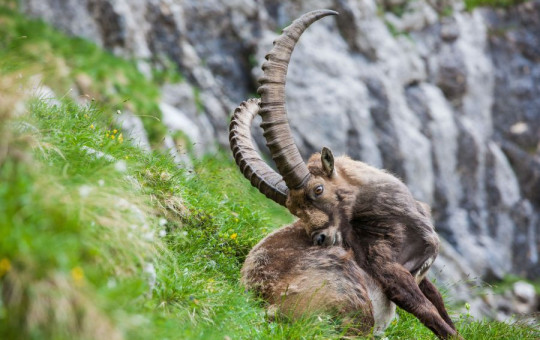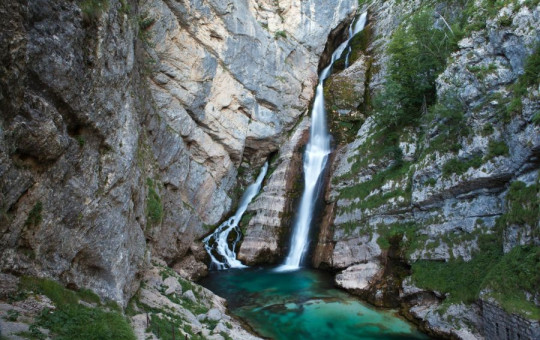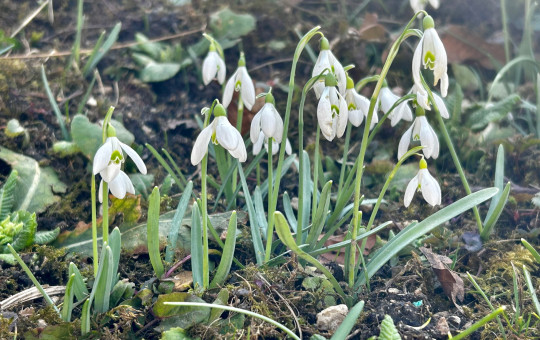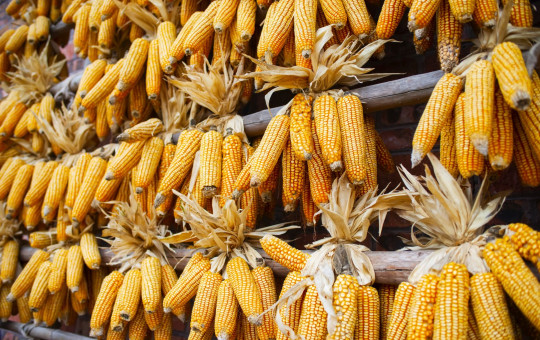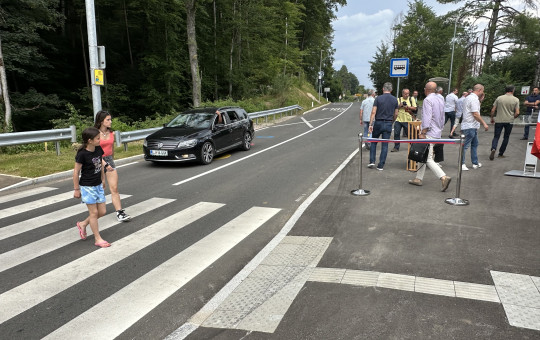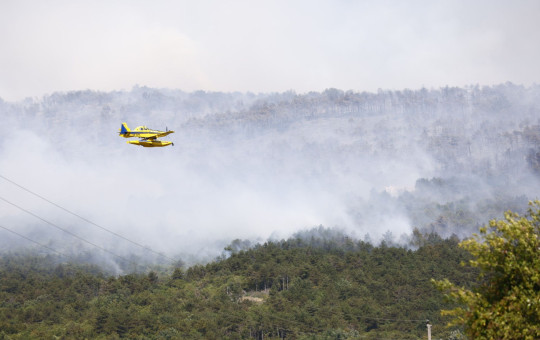The sacrifice and sacrifices made by volunteers in the recent rescue of an injured caverwoman near Cerknica reveal the high hearted culture of the people, who showed an extraordinary sensitivity to the needs of fellow human beings and a willingness to support people in need. On 17 April, after 30 hours of efforts, rescuers successfully rescued a 33-year-old female caver from the Rakek Caving Society from a cave near Cerknica. The rescue was led by Sandi Curk, Head of the Regional Civil Protection Headquarters for Notranjska, with whom we spoke a day later.
The rescue was led by Sandi Curk, Head of the Regional Civil Protection Headquarters for the Notranjska Region
What happened on that fateful day? How did the accident happen?
The caver who died was part of a group of six cavers from the Rakek Caving Society, exploring previously unknown parts of the newly discovered Vranjedolska Cave. On her way back, a large rock fell on her head at a depth of about 100 metres, smashing her helmet and seriously injuring her. The good thing is that Ana, as the injured woman is called, was tied to a rope, and since she was no longer standing on the ground, she was more mobile, which cushioned the blow. She was a very experienced caver with more than a decade of caving experience. After the accident, one of the group of cavers rushed out of the cave to get help, while the others stayed by her side and helped her. She was unconscious throughout the time after the accident but, according to the doctor's later findings, was responsive to pain stimuli. 65 cave rescuers and 90 people from civil protection, fire brigades, police and scouts took part in the rescue. All of them took part in the action as volunteers.
What was the reaction of everyone present in the vicinity after the rock accident?
They were extremely attentive. They immediately put the rock in a horizontal position, but of course they did not know what had happened to it. If you are not in the right position when you have a brain injury, you die within six hours. One of them was Anna's brother, who used his own body and his own heat to warm her body so that it would not hypothermia, thus preserving her vital functions. One of the cavers then started to go back up to initiate the rescue operation. A normal ascent takes an hour and a half, but he reached the top in 25 minutes, of course on adrenaline. As soon as he reached the surface, he informed the Postojna Information Centre, which immediately started the rescue process. As Regional Commander, I was called at 20.05, arrived at the scene at 20.45 and started setting up all the rescue mechanisms.
Head of the Regional Civil Protection Headquarters for Notranjska Sandi Curk
You knew who was in the cave, but you did not have a plan of the cave, because the cave was under exploration. How did this fact affect the course?
The caver who first came out of the cave made a sketch of the cave, which was extremely important. Without that, the rescue would have gone very differently.
Did those trapped in the cave have sufficient food supplies?
Of course not, because they did not count on an accident. They had only a limited amount of food and water with them. I would like to stress that I see patriotism and solidarity as the greatest value in this event. I think that history has made us like this. My parents, who lived under Italian fascism, were not allowed to speak a word of Slovenian. And that makes us even more connected.
What happened then?
Then we established a radio link with the team in the cave on the surface, and that's how we established a telephone link. Before the arrival of the doctor, the cavers had made a bivouac in the cave, where they moved Ana into a labyrinth that did not endanger her life with falling rocks. They had taken small torches with them to heat the room, as well as food and water. The cavers also drew a sketch of the route, which gave us much more precise information about the tunnel. They were especially useful for the miners. Luka Zalokar, head of the mining service, a caver since the age of 8, originally from Rakek, his life is caves and mining, assessed where the biggest narrows of the tunnel were, which would make it difficult to rescue and consume the explosives that had to be brought in. He immediately called in the cave-miners and began to prepare them for this operation. As early as 23.00, four teams of cavers descended into the tunnel and began to mine the tunnel simultaneously in separate sections. First, 8 cm holes were drilled, then the four miners and their assistants mined rocks one metre apart. They used hammers to break, pick up the stones and place them on the edge of the tunnel. In 10 hours, 20 cubic metres of rock were broken, and every 20 minutes for 10 hours, the mines cracked without stopping. We are talking about extreme efforts and a unique approach.
It's not just the way you mine that's new, you've also started preparing for head surgery at a depth of 100 metres for the first time on European soil.
We soon realised that oxygen, glucose and infusion would also be needed to keep the injured woman stable. All this was delivered within an hour. And not only that. We started prepare for an operation at a depth of 100 m. We had a neurosurgeon who would come to the site and conduct the surgery on the surface via video link. The three doctors in the cave would perform the surgery as he instructed. This has never been done before in the world. We have already set up a mini operating theatre on the surface for this purpose.
-
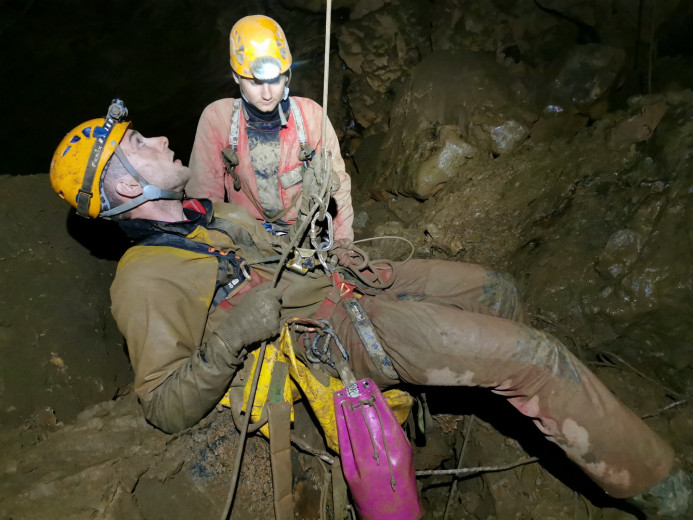
On 17 April, after 30 hours of efforts, rescuers successfully rescued a 33-year-old female caver from the Rakek Caving Society from a cave near Cerknica. Photo: CZ Postojna
-
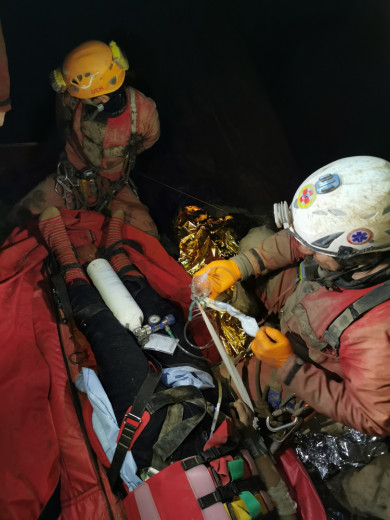
The injured woman was unconscious throughout the accident but, according to the doctor's later findings, was responsive to pain stimulans. Photo: CZ Postojna
-
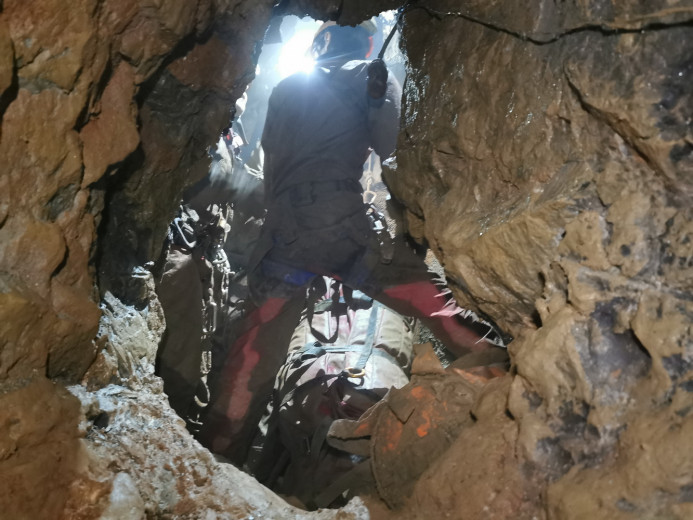
In some places, the tunnel was only 40 cm wide. Photo: CZ Postojna
-
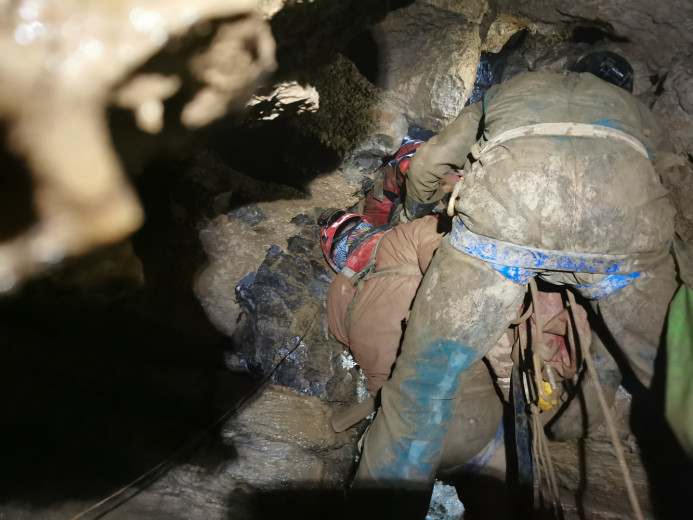
"After the miners had done their job, we sent four teams into the cave to get Ana out." Photo. CZ Postojna
-
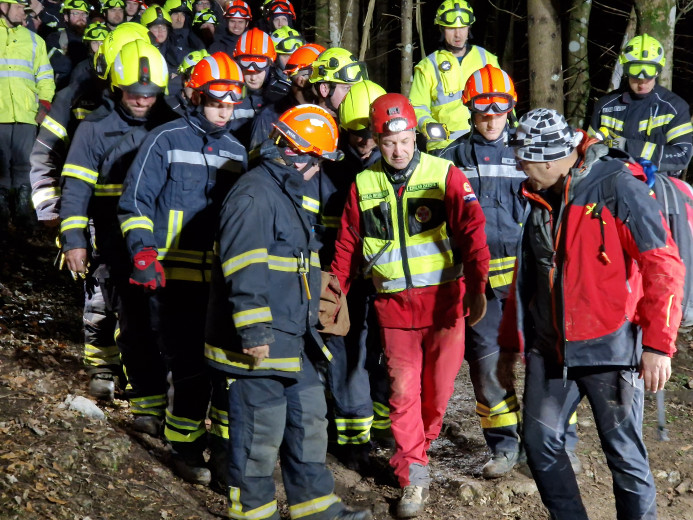
56 firefighters made a living ring around the stretcher to ensure that the injured woman remained firmly mobilised on the stretcher. There were 22 firefighters on each side, they made a shield wall and carried her to the ambulance in this way. Photo: CZ Postojna
I suppose access to the cave has also been difficult?
Extremely, but the firefighters made access to the cave in two hours, cut down a few cubic metres of wood, broke up the rocks and moved them so that we could move to the entrance of the cave, and at the same time set up the lighting units 100 metres away from the headquarters tent. Within three hours of the accident being reported, CZ HQ had set up a tent to accommodate 30 cave rescuers in the middle of the forest, where there is nothing. You know, these are enormous feats. This cannot be done with a tractor alone, only a man, an axe and a motorbike and the heart of the Primorye-Inner Bohemian region can do it. And Slovenian patriotism. These are people who live for this place, all of whom were also emotionally connected to the injured woman, even if they did not know her personally. Many offered to help, offered tractors, tow ropes, motorbikes, pulleys... a lady in her 80s offered to bake bread for the rescuers. I think this is something extraordinary. The village where the family of the victim comes from gathered the moment we brought Anna out. They gathered in front of the sign and prayed all night for her health. The incredible unity of the region. At 4 a.m., when we brought Ana to the surface, the sun was rising and the birds were singing. Mystical messages, out of the eternal silence and darkness we brought Anna into the sun.
You did it in 30 hours, you say that such a thing has never happened in the world before.
After the miners had done their work, we sent four teams into the cave, with the task of bringing Anna out of the cave. Each team had six members, and not just boys, lest you think wrongly, but young girls as well. It is no coincidence, I believe, that a woman can bear three times the burden of a man because she is made to give birth to a child. This is also proven by the longer life expectancy of women. The feminine side came in extremely handy, calming down the course of events. They stood in four places in the tunnel, bearing the weight of the hardships together. In some places they could not carry her on a stretcher and had to move her manually over their bodies. Sometimes there was only 2 mm of clearance from the ceiling to the casualty. Not to mention the psychological strain. They could not allow her body to move even 1 mm on the stretcher, let alone her head. It was also a problem to carry the oxygen tank, which they did not know where to put. Even the doctors could not foresee what would happen to her on the way up. We were faced with an extremely difficult decision on how to get her out of the cave. Not only was she in danger, but also 45 people who were carried out of the tunnel. During the journey, the walls could have peeled off, which was unforeseeable. It was a huge risk, and everyone had to take responsibility for going down into the cave.
-
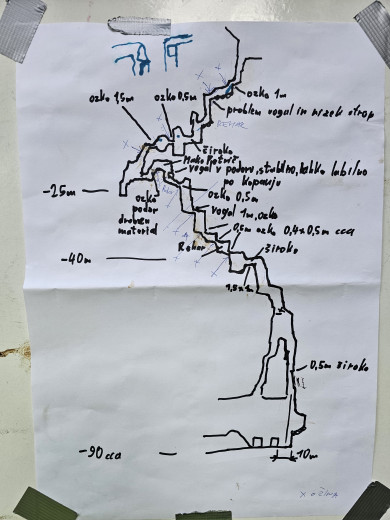
The caver who first came out of the cave made a sketch of the cave, which was extremely important. Without it, the rescue would have been very different. Photo: CZ Postojna
-
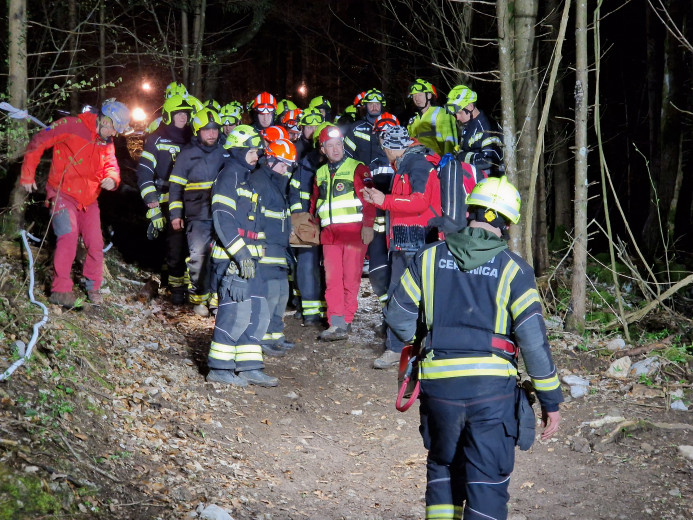
When the rescuers reached the surface, the problem was how to carry her down the bank over the rocks on the steep terrain to the ambulance, which was 1km away. Photo: CZ Postojna
Were there any rocks breaking during the rescue?
They did, and that was the biggest danger. The rescue lasted four hours, and we had to make a half-hour delay at the first and fourth stations. The probe in Anna's throat had moved, endangering her life, and she was re-probed and given oxygen again. Then she was stabilised, with only 12 cm of space between the paramedic and Anna, and in that space the doctor treated the casualty with oxygen and the probe. A truly superhuman situation.
What was it like when they came out of the cave?
When they got to the surface, the problem was how to carry her down the bank over the rocks on the steep terrain to the ambulance, which was 1km away. 56 firefighters made a living ring around the stretcher to ensure that the injured woman remained firmly mobilised on the stretcher. There were 22 firefighters on each side, they made a shield wall and carried her to the ambulance in this way. The ambulance took her away after a good hour. In the ambulance, they had to prepare her for helicopter transport, giving her everything they could not give her in the cave and preparing her for possible surgery in hospital. We were worried about roadblocks, so we asked for a night helicopter overflight, and they had to prepare the ground for it to land.
You really deserve all the congratulations for an extraordinary and extraordinary task for the cavers, the Civil Protection of the Republic of Slovenia and all the locals and the country in general.
Every 15 minutes the Republican Commander of the Civil Protection of the Republic of Slovenia was on the line, the Minister of Health called every 2-3 hours and offered his help. The Minister for Defence was also in constant contact; the Ministers were not obliged to do so, but they did so out of human solidarity. As the disaster occurred over the weekend, everything was closed, but people still turned out en masse, the rescue workers got food every six hours, intermediate meals every three hours, drinks every hour, and when the mine ran out of drill bits, they got into the cave in 45 minutes from Mercury, which had opened a shop in the middle of the night for the purpose. Something like this can only happen in the countryside; unfortunately, there is no such solidarity in the city anymore. Residents of Rakek, Unec and Cerknica left lights burning overnight to support the rescuers. The whole country lived and breathed in support of the rescue. The President of the DZ, Urška Klakočar Zupančič, and the President of the State, Nataša Pirc Musar, also offered their help and contact. These calls gave the rescuers immense strength, and especially the knowledge that they were not alone in the disaster. People came out in large numbers to offer their help, and we can be proud that we live in this country, which has stood by us. I like to say that they helped us to come out of eternal darkness into the light. The country of Slovenia and the people who were willing to help stood behind Anna. And that is a story that few nations have. I am also glad that the country supports the education of rescuers. And last but not least, a special mention must go to Dr Tina Bizjak, who, together with two other doctors and rescuers, was in the cave. As a team, they showed real heroism and extraordinary courage. These are new approaches, new methods, and in this story, the heroes are all those who took part and supported us in one way or another. We are the only ones in the EU with five doctors, trained cavers, who can descend to a depth of 1 000 m, which is equivalent to an 8 000 m mountain. We also have other medical staff who are cavers.
As we write this, the University Medical Centre (UKC) in Ljubljana has said that the caver is still in life-threatening condition and that the situation is unpredictable.
Date: 21. April 2023
Time to read: 5 min

